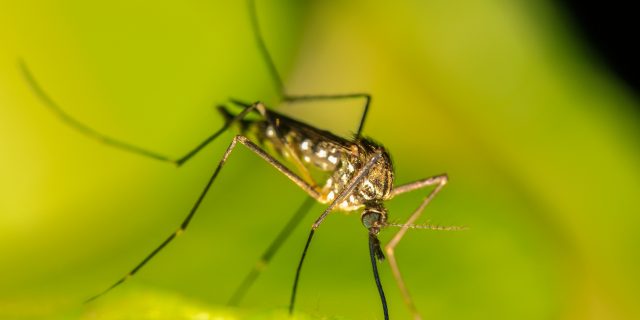
By
Cole Baril and Bryan Cassone
October 2022
Print Version
What you need to know
Mosquitoes facilitate the spread of pathogens (microorganisms that cause disease), resulting in about 700,000 human deaths each year globally and causing significant disease. Yet, little is known about what microbes are harboured by mosquitoes in Manitoba aside from West Nile Virus. This study identifies the presence of mosquito-borne bunyaviruses (a known human pathogen), as well as 33 other viruses being harboured by mosquitoes in Manitoba and highlights the need for enhanced mosquito-borne pathogen surveillance in Manitoba.
Why this research is important
The most common mosquito-borne pathogen in Canada is West Nile Virus (WNV), for which an extensive surveillance program exists, and all three levels of government are involved. However, in recent years mosquito-borne bunyaviruses have been identified throughout Canada, including in mosquitoes, humans, and animals, with serosurveys indicating that 20-40% of people have been infected with a mosquito-borne bunyavirus. In humans, a mosquito-borne bunyavirus infection can be asymptomatic, cause a moderate flu-like illness, or in severe cases, result in neurological diseases such as meningitis or a coma. Despite this, there is no established mosquito-borne bunyavirus surveillance program in Manitoba. Their disease burden in Manitobans is believed to be underrecognized due to a lack of surveillance, a limited human testing pool, and non-specific symptoms.
Studies around the world have shown that mosquitoes also harbour a suite of other viruses, known as insect-specific viruses (ISVs), which can only infect insects. In the last decade, thousands of ISVs have been identified around the globe thanks to advancements in sequencing technology which allows researchers to circumvent the need for a priori knowledge to detect a pathogen, unlike other techniques such as polymerase chain reaction (PCR) and serology which require prior knowledge of the pathogen’s genetic sequence and immunology. In other words, by using sequencing technology, researchers do not need to know anything about the pathogen and can find pathogens they are not necessarily looking for. ISVs have been found to be common in the mosquito population and have been found to exist in the same viral families as human arboviruses. The genomes of ISVs have been shown to have a high degree of plasticity; that is, they can change and evolve quickly. To this end, there is concern that ISVs could evolve to be able to infect vertebrates, including humans, with unknown effects on health. The first step of monitoring ISVs is identifying their presence which is accomplished by this study.
How this research was conducted
Mosquitoes were trapped twice per week from June to August in 2020 and 2021. Mosquitoes were identified and pooled by location, date, and mosquito species. RNA (a type of genetic material) was isolated from mosquitoes, and pools were screened by PCR for the presence of mosquito-borne bunyaviruses. Pools of RNA were also sequenced at the Genome Québec Innovation Centre and subject to sequence analysis to identify any pathogens present.
What the researchers found
PCR was used to screen 34,182 mosquitoes for the presence of mosquito-borne bunyaviruses. Two positive mosquito pools were identified, one in each year of surveillance. The first positive mosquito pool came from Aedes vexans mosquitoes (the inland floodwater mosquito) caught in Brandon on August 2nd, 2020. The second positive mosquito pool came from Aedes vexans mosquitoes caught in Shoal Lake, Manitoba, on July 26th, 2021, and was identified as Cache Valley Virus (CVV). This is concerning because Aedes vexans is one of the most common mosquitoes in Manitoba.
Furthermore, 33 different viruses harboured by mosquitoes in Manitoba were identified through RNA sequencing. Nineteen have been detected in mosquitoes in North America, four viruses have never been identified in mosquitoes before, three viruses are new to North America, and seven viruses were identified as novel viruses. Some of the viruses identified through RNA sequencing are of potential public health concern (e.g., Chuvirus), some are of economic/environmental concern (e.g., Black Queen Cell Virus), and others are newly reported in North America (e.g., Mekrijarvi negevirus).
How this research can be used
This study provides evidence for the presence of mosquito-borne bunyaviruses in mosquitoes in Manitoba, as well as the presence of a suite of other viruses being harboured by mosquitoes in Manitoba, of which some may be of public health concern. This research highlights the need for enhanced mosquito-borne pathogen surveillance in Manitoba.
Acknowledgements
We would like to thank the Public Health Agency of Canada for funding this project, Manitoba Health for providing extra trapping supplies and the City of Winnipeg Insect Control Branch for providing additional mosquito specimens.
About the Researchers
Keywords
- Bunyavirus
- mosquitoes
- pathogen
- viruses
Editor: Christiane Ramsey
Read more BU Research
Research at Brandon University follows comprehensive policies designed to safeguard ethics, to ensure academic integrity, to protect human and animal welfare and to prevent conflicts of interest.


